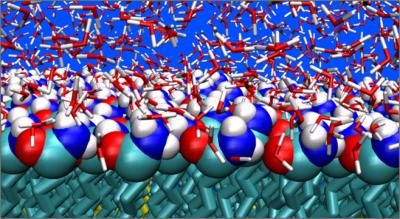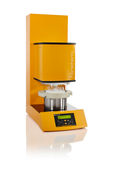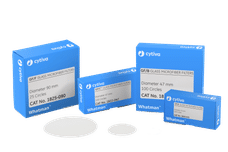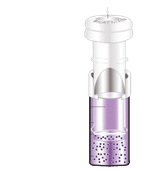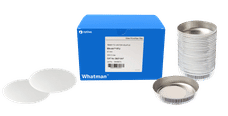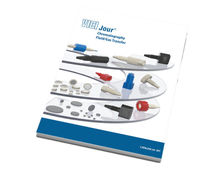New method for simple fabrication of microperforated membranes
Advertisement
Microscopically porous polymer membranes have numerous applications in microfluidics, where they can act as filters, masks for surface patterning, and even as components in 3D devices in which the perforations in stacked membranes are aligned to form networks of channels for the flow of fluids.
In the AIP journal Biomicrofluidics, Hongkai Wu, a chemist at Hong Kong University of Science and Technology, and his colleagues describe a simple new method using just one photolithographic step to fabricate free-standing polymer membranes with neatly patterned holes as small as 10 microns in diameter.
The researchers start by designing the desired pattern on a computer and printing it on a transparency (for holes larger than 20 microns in diameter) or a chrome mask (for those smaller than 20 microns). "Then," Wu says, "we place two spacers on a flat substrate and between them add a few drops of a prepolymer" -- a molecule that can form into a polymer. The prepolymer is covered with the mask, which is pressed down onto the spacers; ultraviolet light is then used to cure the membrane. The mask is then removed to reveal the free-standing, perforated membrane.
"Because our technique can fabricate membranes of pores with accurate sizes and in arbitrary shapes and sizes, and the fabrication is very easy and fast, we expect them to have many potential applications in different fields," says Wu. "These membranes can be directly used as masks to pattern inorganic, organic, and biological materials like proteins and cells, on various surfaces," he says.
"One important application of the membrane is that it makes it very simple to fabricate 3D microfluidic structures with channels running up and down through the membrane, which are difficult to make otherwise."
Organizations
Other news from the department science
These products might interest you

Get the chemical industry in your inbox
By submitting this form you agree that LUMITOS AG will send you the newsletter(s) selected above by email. Your data will not be passed on to third parties. Your data will be stored and processed in accordance with our data protection regulations. LUMITOS may contact you by email for the purpose of advertising or market and opinion surveys. You can revoke your consent at any time without giving reasons to LUMITOS AG, Ernst-Augustin-Str. 2, 12489 Berlin, Germany or by e-mail at revoke@lumitos.com with effect for the future. In addition, each email contains a link to unsubscribe from the corresponding newsletter.



